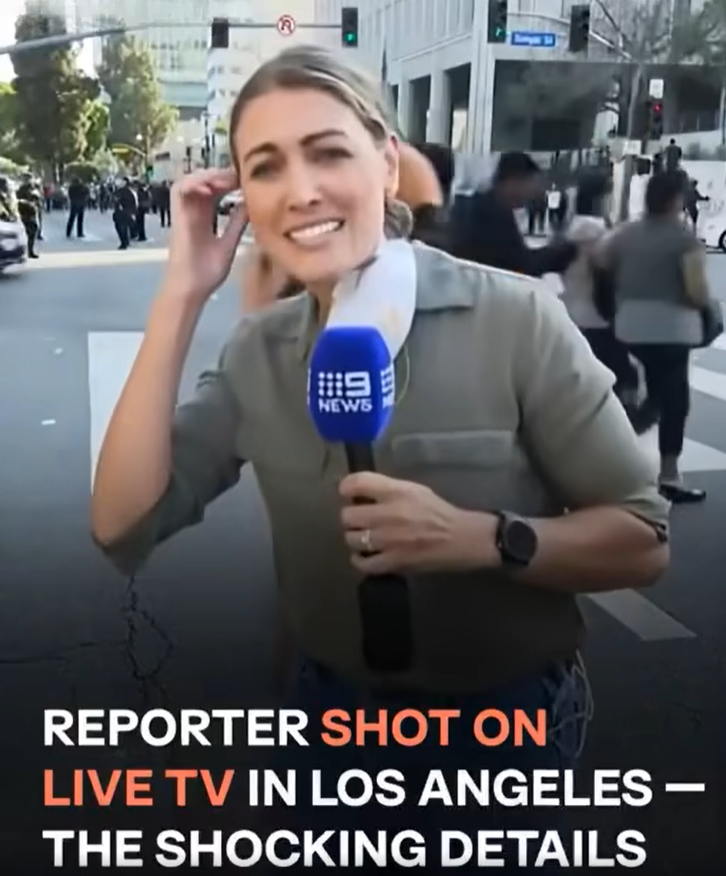Australian journalist Lauren Tomasi faced a frightening ordeal while covering immigration protests in Downtown Los Angeles on June 8, 2025. What began as a routine news assignment quickly escalated into a tense and hazardous situation. Tomasi, reporting live for her network, was caught in the midst of clashes between demonstrators and law enforcement. During the broadcast, she was briefly struck by what appeared to be a rubber projectile, forcing her to step back from the camera. Though shaken, she later assured viewers that she was not seriously injured and continued her reporting, emphasizing the volatility of the unfolding events.
The protests had started two days earlier, on June 6, following federal immigration enforcement operations that resulted in multiple detentions across the city. The demonstrations initially began as peaceful gatherings of residents and activists expressing concern over immigration policy and enforcement tactics. However, tensions rose as law enforcement increased their presence, and National Guard troops were deployed to assist local authorities, intensifying the atmosphere. Videos and social media posts captured by Tomasi and other journalists showed the crowd swelling with demonstrators holding signs, chanting, and at times confronting officers, while flash bangs and tactical maneuvers added to the chaos.
Throughout the day, Tomasi provided real-time updates on social media, documenting how the scene shifted from a calm assembly to a highly charged environment. Her posts highlighted the challenges reporters face in maintaining professional coverage while ensuring their personal safety. Images she shared depicted dense crowds, officers in riot gear, and moments of conflict, illustrating the unpredictable nature of mass protests and the fine line between peaceful demonstration and public disorder.
Local California leaders criticized the deployment of additional federal forces, warning that an aggressive presence could escalate tensions further and endanger residents, demonstrators, and journalists alike. They urged for measured responses and called for open channels of communication between law enforcement and community leaders to de-escalate the situation. Federal officials, meanwhile, defended their actions as necessary to maintain order and enforce existing immigration laws, highlighting the complex intersection of public safety and civil liberties.
The incident involving Tomasi has sparked widespread discussion about journalist safety during protests, particularly when federal actions intersect with local communities. Media advocacy groups emphasized the importance of protecting reporters, noting that press freedom depends not only on the right to gather and disseminate information but also on tangible safeguards in volatile environments. Tomasi’s experience serves as a vivid reminder of the risks journalists face while documenting significant social and political events and underscores the responsibility of authorities to ensure that coverage can proceed safely.
In addition to highlighting the dangers for reporters, the events renewed focus on the broader debate over immigration enforcement in the United States. Advocacy organizations called for accountability regarding detentions, humane treatment of individuals in custody, and the creation of secure conditions for peaceful protest. The protests in Los Angeles demonstrate how quickly public demonstrations can escalate when enforcement actions, political tension, and large crowds converge, while Tomasi’s reporting provides an on-the-ground perspective that brings both the human and policy dimensions of the crisis to light. As discussions continue, journalists, policymakers, and the public are grappling with questions about the balance between law enforcement, civil liberties, and the safety of those covering critical news. Tomasi’s ordeal highlights the courage required to report from the front lines and the need for continued attention to the protection of media professionals in moments of civic unrest.



